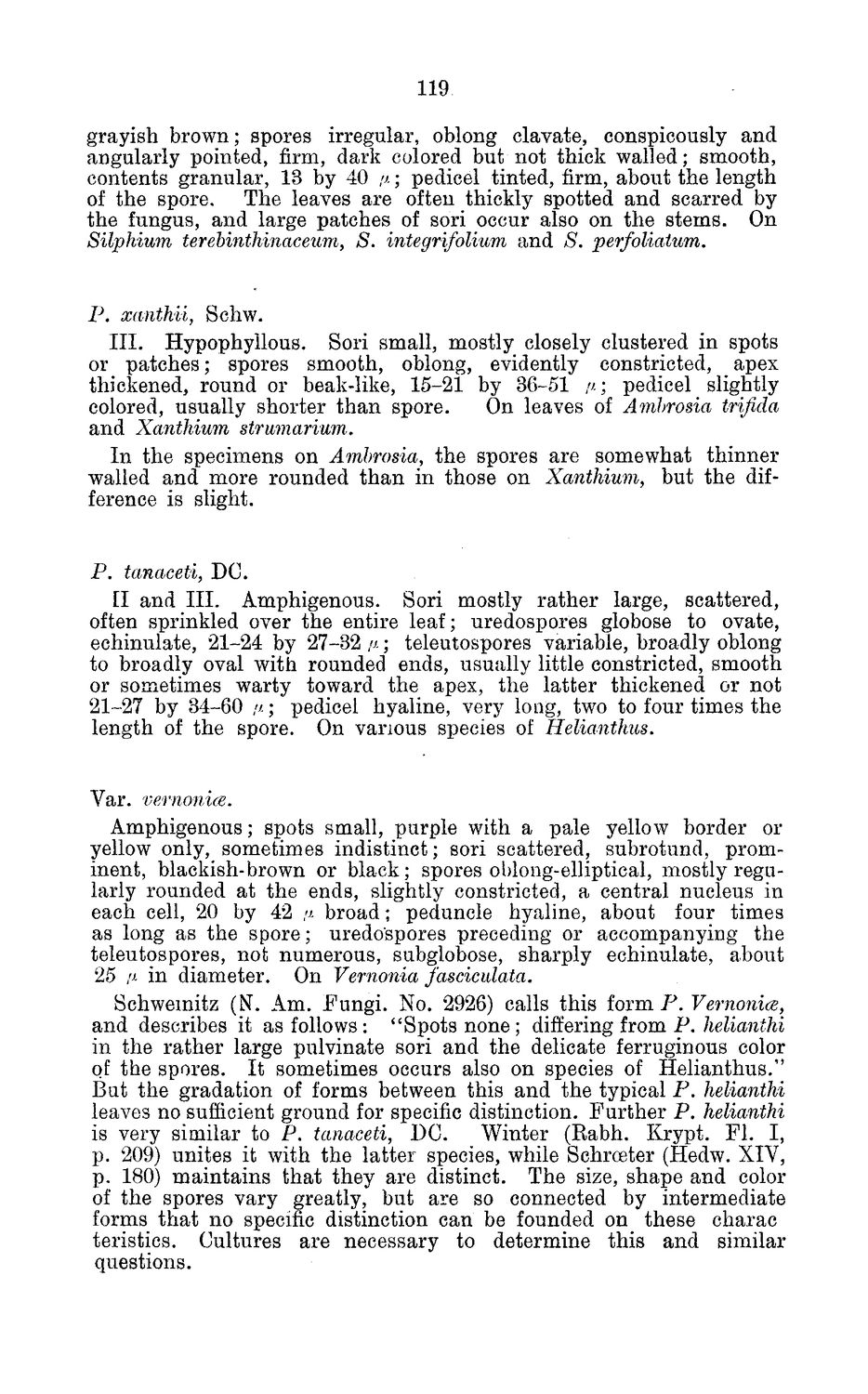| |
| |
Caption: Board of Trustees Minutes - 1884
This is a reduced-resolution page image for fast online browsing.

EXTRACTED TEXT FROM PAGE:
119 grayish brown; spores irregular, oblong clavate, conspicously and angularly pointed, firm, dark colored but not thick walled; smooth, contents granular, 13 by 40 n; pedicel tinted, firm, about the length of the spore. The leaves are often thickly spotted and scarred by the fungus, and large patches of sori occur also on the stems. On Silphium terebinthinaceum, S. integrifolium and S. perfoliatum. P. xanthii, Schw. III. Hypophyllous. Sori small, mostly closely clustered in spots or patches; spores smooth, oblong, evidently constricted, apex thickened, round or beak-like, 15-21 by 36-51 //; pedicel slightly colored, usually shorter than spore. On leaves of Ambrosia triftda and Xanthium strumarium. In the specimens on Ambrosia, the spores are somewhat thinner walled and more rounded than in those on Xanthium, but the difference is slight. P. tanaceti, DC. [I and III. Amphigenous. Sori mostly rather large, scattered, often sprinkled over the entire leaf; uredospores globose to ovate, echinulate, 21-24 by 27-32 ,u; teleutospores variable, broadly oblong to broadly oval with rounded ends, usually little constricted, smooth or sometimes warty toward the apex, the latter thickened or not 21-27 by 34-60 /i; pedicel hyaline, very long, two to four times the length of the spore. On various species of Helianthus. Var. vernonice. Amphigenous; spots small, purple with a pale yellow border or yellow only, sometimes indistinct; sori scattered, subrotund, prominent, blackish-brown or black; spores oblong-elliptical, mostly regularly rounded at the ends, slightly constricted, a central nucleus in each cell, 20 by 42 >i broad; peduncle hyaline, about four times as long as the spore; uredospores preceding or accompanying the teleutospores, not numerous, subglobose, sharply echinulate, about 25 (i in diameter. On Vernonia fasciculata. Schwemitz (N. Am. Fungi. No. 2926) calls this form P. Vernonia, and describes it as follows: "Spots none; differing from P. helianthi in the rather large piilvinate sori and the delicate ferruginous color of the spores. It sometimes occurs also on species of Helianthus." But the gradation of forms between this and the typical P . helianthi leaves no sufficient ground for specific distinction. Further P. helianthi is very similar to P. tanaceti, DC. Winter (Rabh. Krypt. Fl. I, p. 209) unites it with the latter species, while Schroeter (Hedw. XIV, p. 180) maintains that they are distinct. The size, shape and color of the spores vary greatly, but are so connected by intermediate forms that no specific distinction can be founded on these charac teristics. Cultures are necessary to determine this and similar questions.
| |